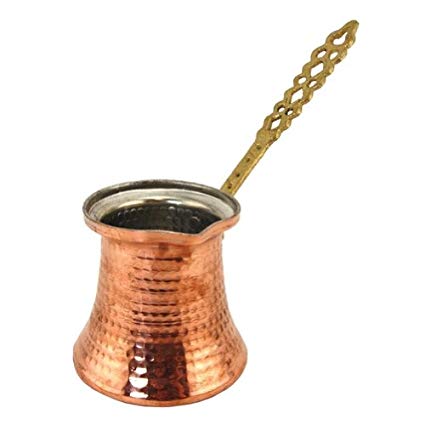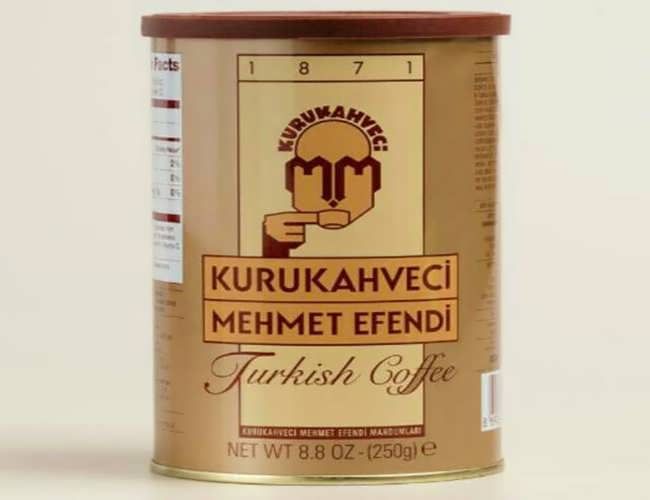The culture of Turkish coffee has a very important place in the history of coffee: it is neither more nor less than the very first known method of preparing coffee.
It will engender the very first "baristas" in history, a strong culture of specialty coffee (or rather its ancestor if we refer to post-Starbucks specialty coffee) and a relay point for this most consumed drink in the world since the Turkish Empire, more commonly known as the Ottoman Empire, to Europe.
Focus on oriental coffee, also called Arabic coffee, also called Turkish coffee, also called… you understood me. 😊
The origins of Turkish coffee: the first known method of coffee preparation in history!
The origins of coffee and all the legends surrounding it are located in Africa and it is also here that the history of Turkish coffee begins .
A bit of history is important at this stage, many may have little or no memory of their history lessons and the Ottoman Empire...
… it is however very tragic after all the evil that they gave themselves: it is about a colossal empire (Turkish, therefore) which existed from 1299 to 1923 and which played many major roles in the History because of its very dominant position in the Middle East and the Mediterranean basin.

Looking closer, I let you imagine the global strategic and geopolitical impact of this empire... including the most important legacy of this empire (of course 😊): the culture of Turkish coffee.
Several variations exist and all seem plausible, even converging, so I will share with you the most common story about the introduction of coffee from Africa to the Ottoman Empire .
Coffee is said to have traveled around the 1540s after a certain Özdemir Paşa, a governor in Yemen, discovered this drink in his own region. He decided, full of common sense, to present it to the one who was the tenth Sultan of the Ottoman dynasty, Suleiman 1st, more elegantly called Suleiman the Magnificent.
The Sultan greatly appreciated this new drink and very quickly, the court and then the elites of the empire seized it and reappropriated this strange black beverage. Much finer grind using a mortar, coffee prepared in decoction which foams and utensils that will soon be essential such as the Ibrik .
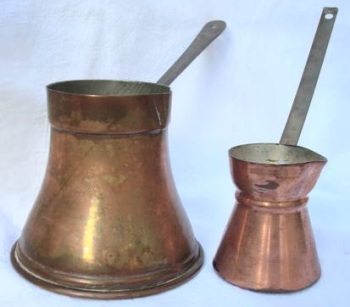
Since a privileged few, the drink soon spread like wildfire in the Ottoman culture and throughout the empire. Coffee then becomes a commodity accessible to all .
Coffee is spreading in Turkish culture
The first coffee houses (and therefore, the first coffee shops in history ) opened from the year 1554, as well as the ancestor of the barista: the “kahveci usta”. These specialists in the preparation of coffee were first mainly employed in families of good fortune and Palaces before they opened their own establishments accessible to all.
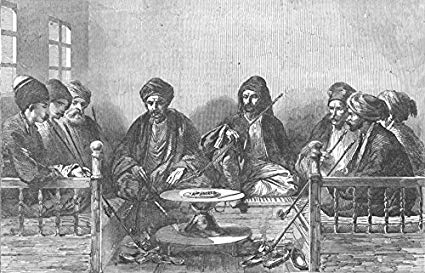
The imprint of coffee in the Ottoman / Turkish culture is so strong that many anecdotes surround it, especially around marriage.
A coffee is served to the husband on his wedding day with the particularity of being salty… the more salt the wife puts in her preparation, the more difficult the coffee will be to drink without making faces or other unsightly behavior, which testifies to a rather “measured” interest in her future husband… On the other hand, if she puts little salt in the coffee, the coffee will be easier to drink and she is in fact much more interested in this marriage.
Among the other most famous anecdotes, the laws which prohibit the consumption of coffee in 1656 illustrate an important element around this Turkish coffee culture .
Indeed, contrary to the Italians and to a “lightning” consumption of espresso, the Turks had found in the coffee a pretext to gather, to discuss the rain and the good weather, it was a real social cement. Still today, Turkish coffee is drunk taking your time, we are open to discussion and we find friends or family there to have a good time .
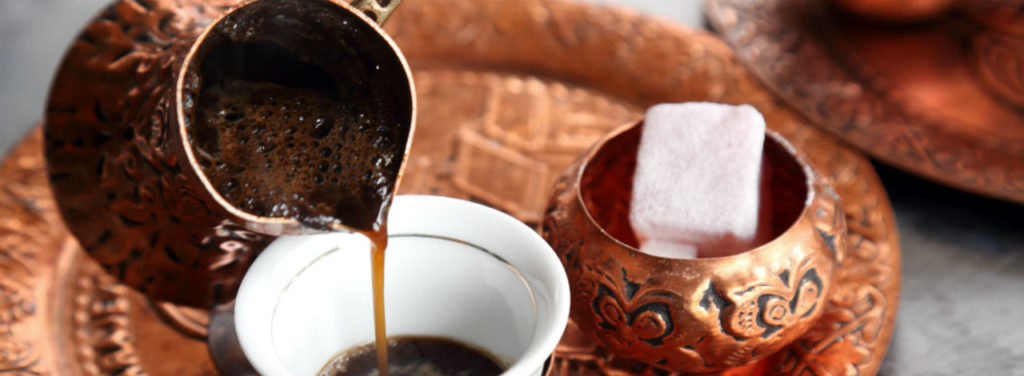
What happened in 1656? The government took fright, it discovers one thing leading to another that these frequent meetings in coffee houses become places where we discuss politics, we remake the world, and why not: we foment conspiracies...
… the government decides purely and simply to make coffee illegal. It really didn't last long: the people, shocked and taken by the throat by a cultural phenomenon largely rooted in their mores, rebelled en masse and the empire backtracked after some violence. This does not prevent it at the same time from heavily taxing coffee.
Coffee is coming to Europe!
In the 1600s, Turkish merchants began to export coffee to Europe.
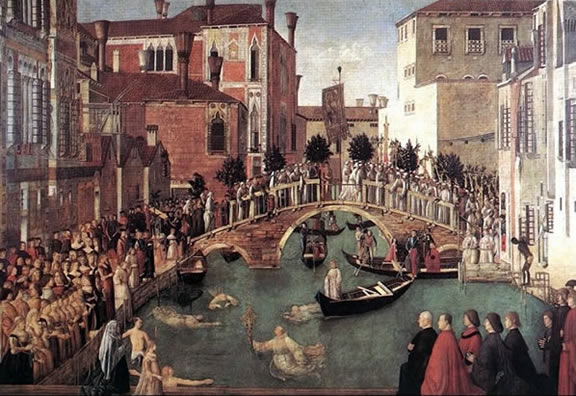
The first point of exchange was then Venice, a Central market place for Europe at that time. A few years later came the turn of England, then little by little, coffee spread to the rest of the continent.
In 1657, Sultan Mehmet IV visited King Louis XIV and offered him coffee beans. It was France's first contact with Turkish coffee and an event often mentioned by historians as a turning point in the expansion of coffee in Europe.
We therefore owe our first emotions with coffee to the Ottoman Empire and Turkish coffee!
Turkish coffee? Greek coffee? Oriental coffee? How to find it...
This is not always well understood, but you certainly have clearer ideas now: Turkish coffee retains its "Turkish" name only through the cultural and military influence of the Ottoman Empire over the entire Middle East during many centuries (see previous map).
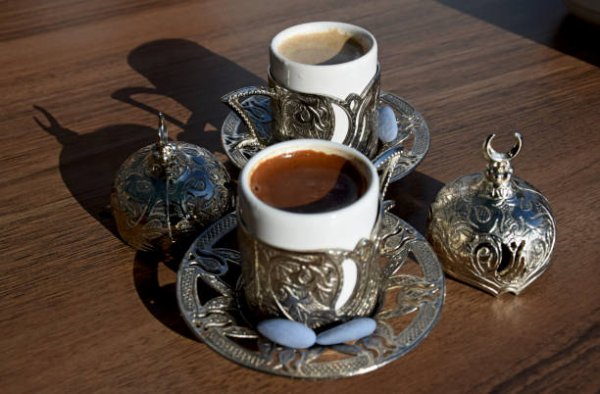
For Westerners, we usually refer to “Arabic” or “Oriental” coffee to talk about the generic way of preparing coffee in Middle Eastern countries. The Ottoman Empire belonging to the past, each nation has reclaimed part of its cultural identity and has not hesitated to bring some subtleties to their traditional coffee preparation.
So there is Turkish coffee as well as Israeli coffee, Syrian coffee and all the other variations you can imagine . There are very great similarities between all these coffees. Sometimes we won't even make a difference.
The roasting, the name and appearance of the utensils or the use of spices may vary from one preparation to another. These are just reappropriations of the original Turkish coffee (or oriental/Arabic coffee if we put everyone on an equal footing).
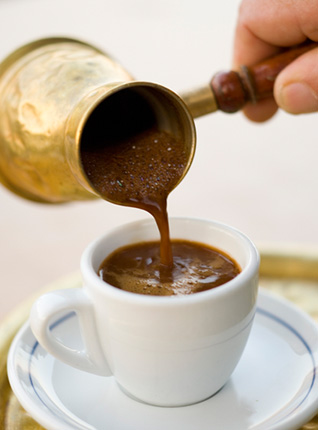
Preparation of Turkish coffee and essential accessories
A little further down, we will demystify some misconceptions or misinformation about the preparation of Turkish coffee. First, let's look at the different accessories for preparing Turkish coffee.
Ibrik (or cezve)
Turkish coffee is prepared using an ibrik or cezve , traditionally made of copper, today there are different materials. The majority of ibriks are not compatible with an induction hob.
Do you want a Turkish coffee maker that goes better with our contemporary kitchens? We also offer you a stainless steel ibrik in different sizes… for different occasions!
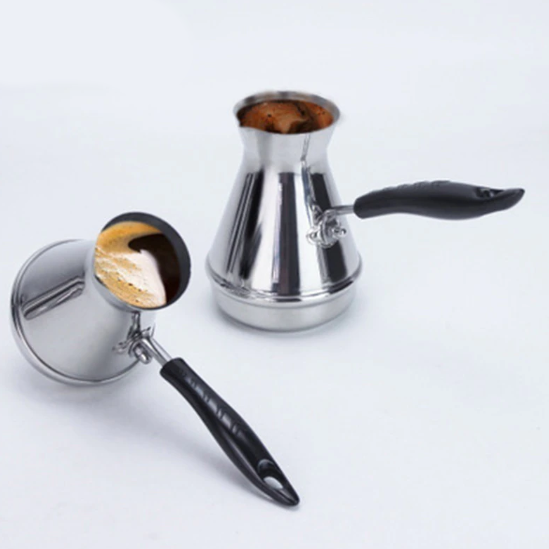
Turkish coffee grinder
You will also need a Turkish coffee grinder . Whichever grinder you use, you need to be careful that you can get a very fine grind, otherwise you won't be able to make Turkish coffee. Pay attention to this if you buy already ground coffee!
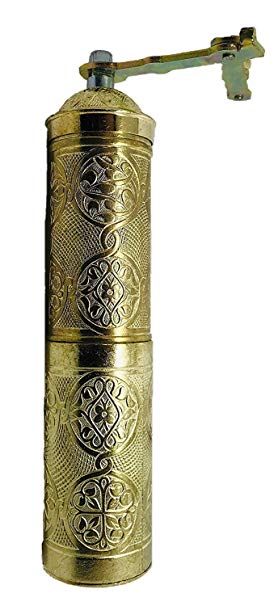

Discover the Turkish coffee grinder
Traditional Turkish coffee cups
For those who want a complete experience, it is impossible not to mention the traditional dishes that make all the charm of the preparation and the tasting . The small traditional Turkish cups of 60-75ml, richly decorated, are part of those little details that count.
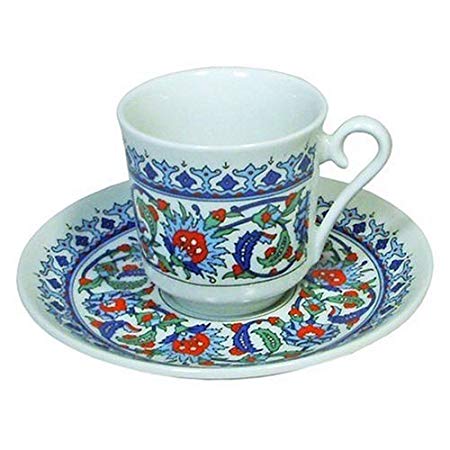
I briefly mention the Hovoli , a kind of sandbox that allows you to cook (in the sand) your coffee very gently, a fascinating typical experience to encounter in Greek cafés… or even in a coffee shop in Paris!

Preparation of Arabic or Oriental coffee: what you need to know
Here are some little-known facts that will help you enjoy your coffee better and make informed choices. Because in the end, it's all a matter of taste and not of tradition (even if we appreciate them a lot)!
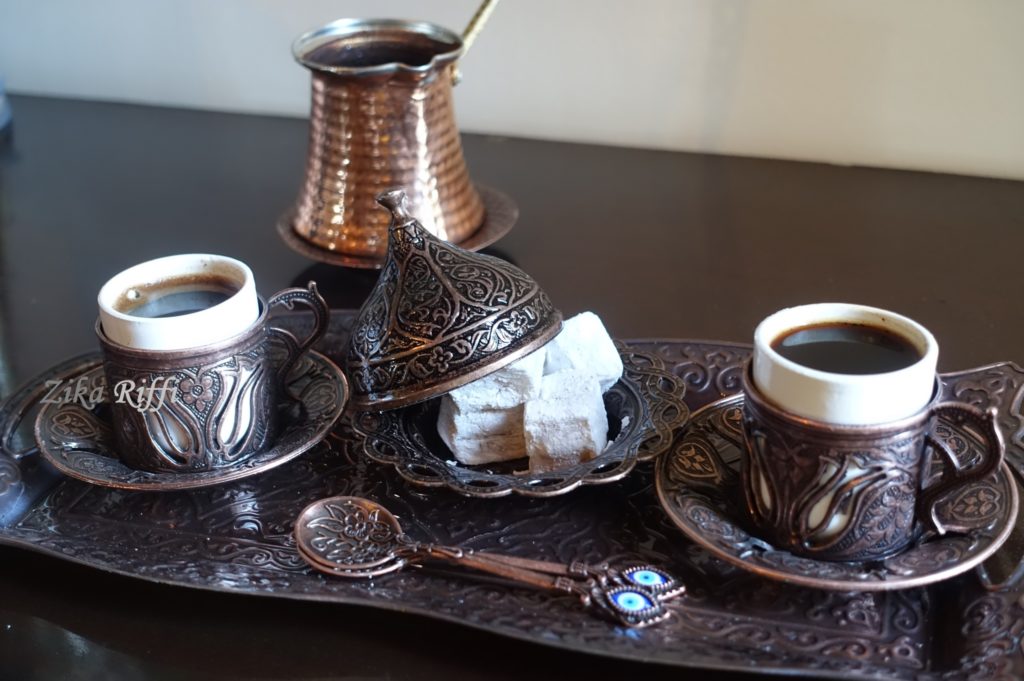
- Turkish coffee, contrary to popular belief, is not a "traditionally" sweetened coffee. Even today, Turkish coffee has a few well-known names: " country style " or " man's coffee ", literally "old-fashioned" or "coffee for men" when ordered black, that is say without sugar!
Sugar arrived massively in Turkish culture in 1776 with the spread of Turkish delights , these confectioneries recognized throughout the world today. The coffee houses quickly began to offer Turkish delight with their coffee to compensate for the bitterness of the petit noir. The two industries have since grown close to each other and Turkish delight served with Turkish coffee has become a tradition.
It wasn't until later, when sugar became very popular to add to all drinks, that the sugar ended up in the cup! - Turkish coffee is not a coffee to be boiled . It is very common today to read, by misuse of language in particular, that coffee must be boiled several times before serving it.
In truth, it is important not to boil your coffee, otherwise you will miss it and make it a simple decoction of black, bitter and soulless caffeine... you do have to heat your coffee, this several times, but without bring to the boiling point . that's burnt coffee!
Preparation of Turkish coffee
Which coffee to buy to prepare a Turkish coffee?
If you are looking for a go-to coffee brand for your Turkish coffee , I recommend the Kurukahveci Mehmet Efendi brand . One of the oldest companies in Turkey and today one of the most famous Turkish coffee brands (maybe even the most famous) founded in 1871, originally a roaster.
Taste Turkish coffee
The grind will be ideal.
Like any mass-market brand, it is not ideal for the greatest connoisseurs and the most demanding among us, but it is well worth your attention for the time of a tasting… if not more.
If you want to fall back on another brand or the original coffee of your choice, we recommend a medium roast, 100% arabicas for this type of preparation and pay particular attention to the grind, which must be as fine as possible.
Ingredients of a Turkish coffee for one person

Use 75ml of bottled water. Avoid tap water, water has a considerable impact on the taste of your coffee, although this aspect is still too often neglected in all coffee preparations. Well known to tea lovers, it is no less important for your coffee!
Use the quantity of coffee according to your tastes and preferences, do not be attached to a precise quantity of coffee, you must certainly test several times to find the quantity that suits you. A good rule of thumb would be 7.5 grams of ground coffee to 75ml of water .
You will also need sugar if you want to sweeten your coffee (discussed above), and a base of 0.35 grams (1 pinch) of cardamom for those who want to experience spicy Turkish coffee.
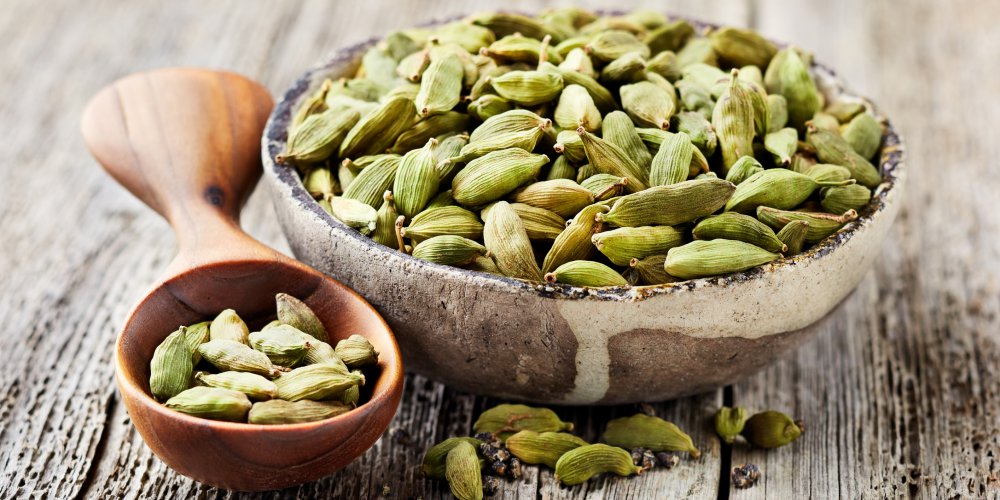
Spices in my coffee?
Absolutely, Turkish coffee is prepared with some spices in some regions but not in all cafes. It is therefore advisable to try at least once to find out if you like it, but know that it is not necessarily breaking the rule or the tradition not to use spices for your Turkish coffee.
If you want to give it a try, cardamom and clove are by far the most used. Cardamom which, moreover, is very present in the gastronomy of the Middle East.
It's also common to add cardamom directly to your coffee beans and grind them together .
Turkish coffee recipe
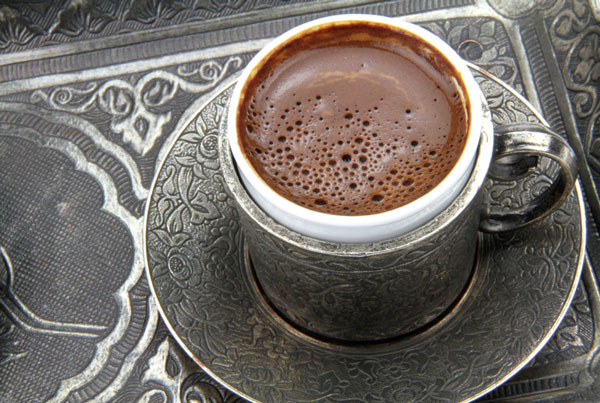
- Place the water at room temperature in your ibrik
- Place your coffee in the water, the sugar if you put any (never put the sugar afterwards, once the preparation is finished, the Turkish coffee has foam + the coffee grounds at the bottom, you will not be able to mix it! ) as well as your spices, if there are spices.
No need to mix the ingredients, water at room temperature helps dissolve them. - Light your fire, just enough, and place the ibrik on it. Prefer a real fire to electric plates because the heat is more difficult to control.
Let your preparation heat up. The coffee should start to sink to the bottom within about a minute, then you can lower your heat a bit more. Getting your fire under control is important . - Mix with a spoon, preferably wooden, to obtain a homogeneous drink. After this first mixing, leave your spoon alone… do not mix a second time!
Tip : Cold water and low heat, the extraction will still take a long time and you can extract even more aroma. The secret of Turkish coffee? Patience ! - The coffee should begin to foam around the edges. Then lower the heat to a minimum, do not let the water boil! Never .
The coffee will create more foam, remove it from the heat before it boils and leave to stand for 15 seconds. - Take a teaspoon of the foam to place in your cup (if several cups, all guests should receive an equal amount of foam!) and put the ibrik back on the heat.
- Let it heat up again until you get a second rise of foam, still without boiling the coffee .
You will find many recipes on the internet mentioning a third round trip on the heat to froth the coffee, I advise against it because most of us will not master this third step. Better to leave it to experienced baristas who won't miss the foam during the third pass, which is really more delicate. - At this point, you can remove your coffee from the heat and pour it into your cup, trying to keep as much foam as possible above the coffee. Then wait about 30 seconds for the coffee grounds to sink to the bottom of your cup (do not drink it) and enjoy your Turkish coffee!
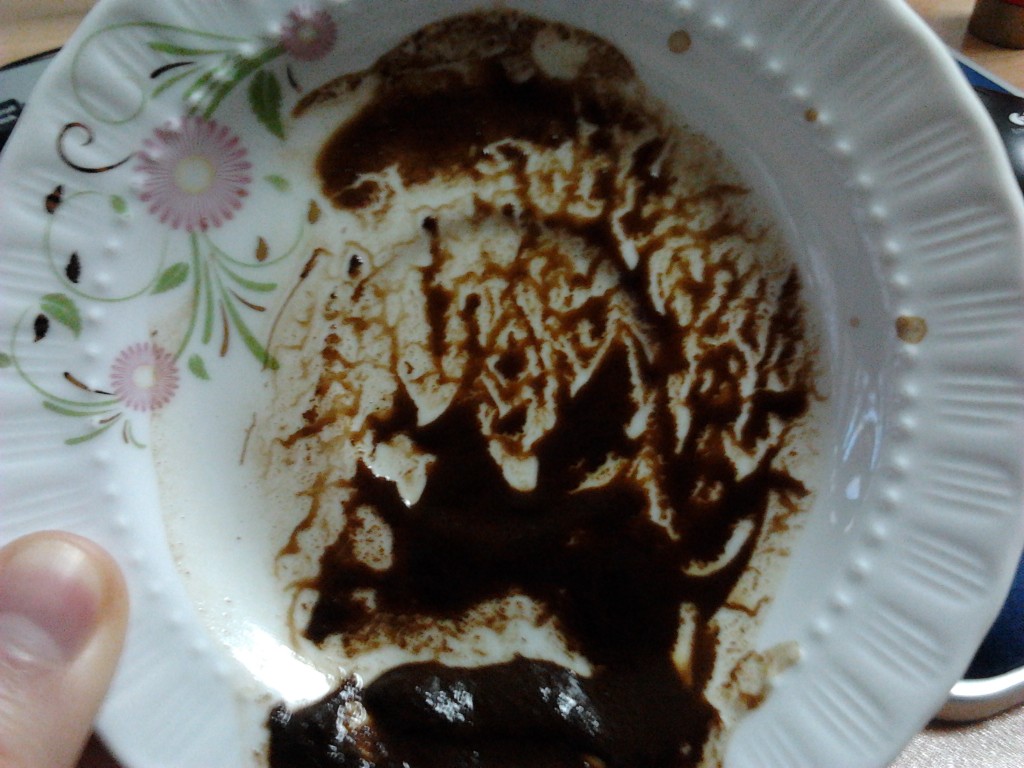
Did you know that Turkish people like to read coffee grounds to see love, good fortune and other omens? For example, by spilling the coffee grounds remaining at the bottom of the cup into your saucer to detect certain shapes. It is a very well-known fact of Turkish coffee and a discipline that is sometimes taken very seriously and even has a name: Tasseography or Tasseomancy .
Here is a light note on which to conclude this article on Turkish coffee!



